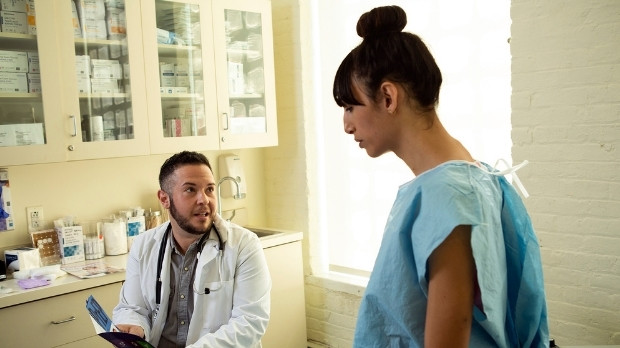There are approximately 2.3 million people in the UK who identify as part of the lesbian, gay, bisexual, transgender, queer or questioning (LGBTQ+) community – a community that continues to experience inequalities throughout the cancer pathway, from screening, to treatment and end-of-life care.
A 2019 study asked non-surgical cancer doctors about their knowledge of, and attitudes to, LGBTQ+ patients. The results found that while most clinicians felt comfortable treating LGBTQ+ patients, there were low rates of routine enquiry about sexual orientation (5%), gender identity (3%) and preferred pronoun use (2%).
Asking these questions as part of a consultation is important in creating an inclusive environment for LGBTQ+ patients, and to get a clearer picture about their support structure and individual healthcare needs.
3 in 4 respondents asked for more education and training around LGBTQ+ healthcare, with 68% saying LGBTQ+ healthcare needs should be a mandatory part of postgraduate medical training.
This is one reason that the Joint Collegiate Council for Oncology and the Association of Cancer Physicians (ACP) recently produced a statement discussing the barriers the LGBTQ+ community faces, and the commitments needed to improve their care.
We spoke to Dr Alison Berner, a medical oncologist with a special interest in gender identity, and lead author of the statement, about how we can improve cancer care for the LGBTQ+ community.
What inequalities do LGBTQ+ cancer patients face?
LGBTQ+ communities experience inequalities throughout their cancer journey, including in screening and diagnosis, clinical care, communication and overall experience.
“Much of this stems from a lack of education and cultural humility by provider organisations, which results in the assumption that equal care means equitable care,” says Berner.
The social aspects of being LGBTQ+ play a huge role in a patient’s experience. For example, acknowledging someone’s partner as their partner rather than a friend or relative. This might seem simple and expected, but it doesn’t always happen.
“That can really undermine the clinical relationship, and there are so many knock-on effects of that that we don’t measure very well,” added Berner. “Does that mean the patient is less likely to call up that doctor when there’s a problem?
“The burden that cancer in general has on mental health and wellbeing – how much worse are we making that by undermining their close relationships?”
There’s also a lot of historical discrimination and stigma to overcome.
The older generation, who are at a greater risk of developing cancer now, lived through a time when everything about sexuality and gender identity had to be kept secret, and this can affect what they disclose to their doctors.
It must also be acknowledged that LGBTQ+ patients are not a homogenous group. A person-centred approach is required, with particular consideration to intersectionality, where multiple aspects of identity, such as race and sexuality, overlap.
Some groups, such as Black trans women, experience disproportionate inequalities compared to the remainder of the LGBTQ+ population. Other patient groups can have very specific issues, such as managing sex-associated cancers in transgender patients.
Cancer screening for trans and non-binary people
Cervical and breast cancer screening come with several barriers for trans and non-binary people.
Lack of information on who is eligible, not receiving an invite, and gender dysphoria are just some of the barriers that might prevent someone attending a screening that could potentially find cancer at an earlier stage when it’s more treatable.
Find out more about cancer screening for trans and non-binary people on our website.
How can care be improved for LGBTQ+ patients?
Putting out this statement is an important step. LGBTQ+ people hearing that key medical organisations are acknowledging them and their care, and committing to making improvements, is vital to creating a welcoming and respectful environment.
“It’s key for LGBTQ+ patients to hear that they’re important and seeing their care reflected in these organisations. For a long time, it was taboo to talk about sexual orientation and gender identity, but now it is just an aspect of someone’s identity that needs to be factored into healthcare,” says Berner.
But what are the next steps to improve cancer care for the LGBTQ+ community?
The statement outlines 4 key areas, including education and training, data collection, research and valuing diversity.
Education can help bridge the gap for doctors to understand the unique needs of LGBTQ+ patients, and encouraging diversity within both the research and healthcare workforce is required to help understand these considerations even more.
For example, the inclusion of LGBTQ+ people in the design and development of trials, either as healthcare professionals or patients, is vital in making sure they’re inclusive and welcoming for the LGBTQ+ community. This would hopefully encourage more LGBTQ+ patients to take part in them, meaning any recommendations that come from those trials are more likely to be inclusive of all people they may affect, whether it’s a new treatment or way of working.
However, it’s difficult to propose solutions without a full understanding of the problem.
“A major barrier is that whilst it’s clear that LGBTQ+ people face inequalities in cancer care, we still don’t know the whole picture,” says Berner.
It is hard to collect high-quality, UK-specific data about cancer care for LGBTQ+ patients due to the lack of routine recording of sexual orientation and gender identity in healthcare data, and, in particular, cancer registries.
Patients may be unwilling to proactively share their sexual orientation and gender identity, due to fears of inappropriate questions or discrimination.
It’s vital that doctors have the skills and confidence to talk to their patients about the benefits of sharing this information with them.
“We don’t know if we’re missing things if we’re not asking the questions,” says Berner, “and valuing someone’s unique identity is key to person-centred care.
“I hope these commitments will be the start of a sea-change that prioritises individual patient needs in cancer care, to provide true personalised medicine, and improve outcomes not only for LGBTQ+ patients, but all minority groups.”
You can read the full statement on The Royal College of Radiologist’s website.
